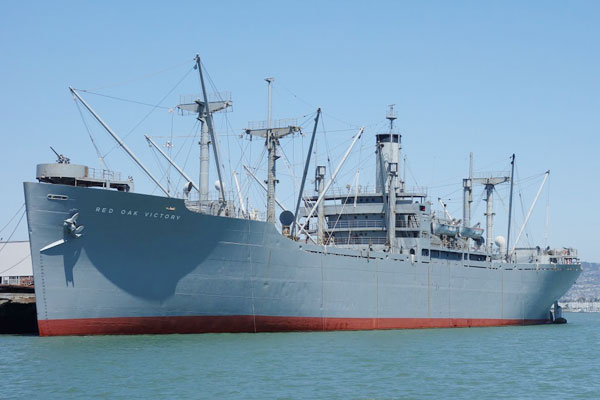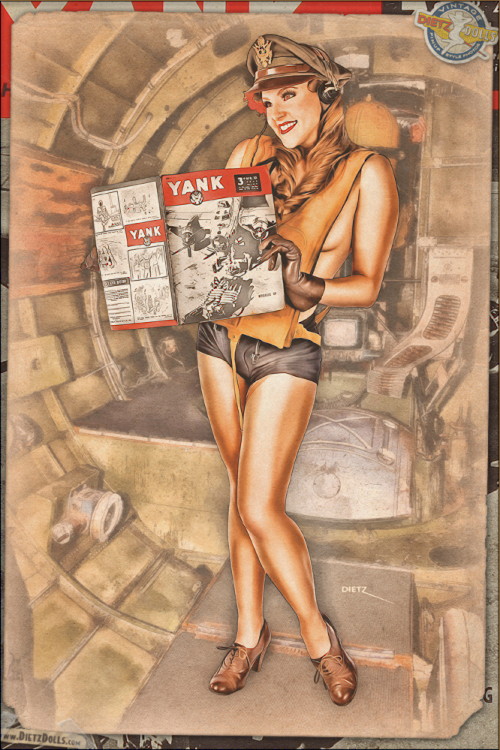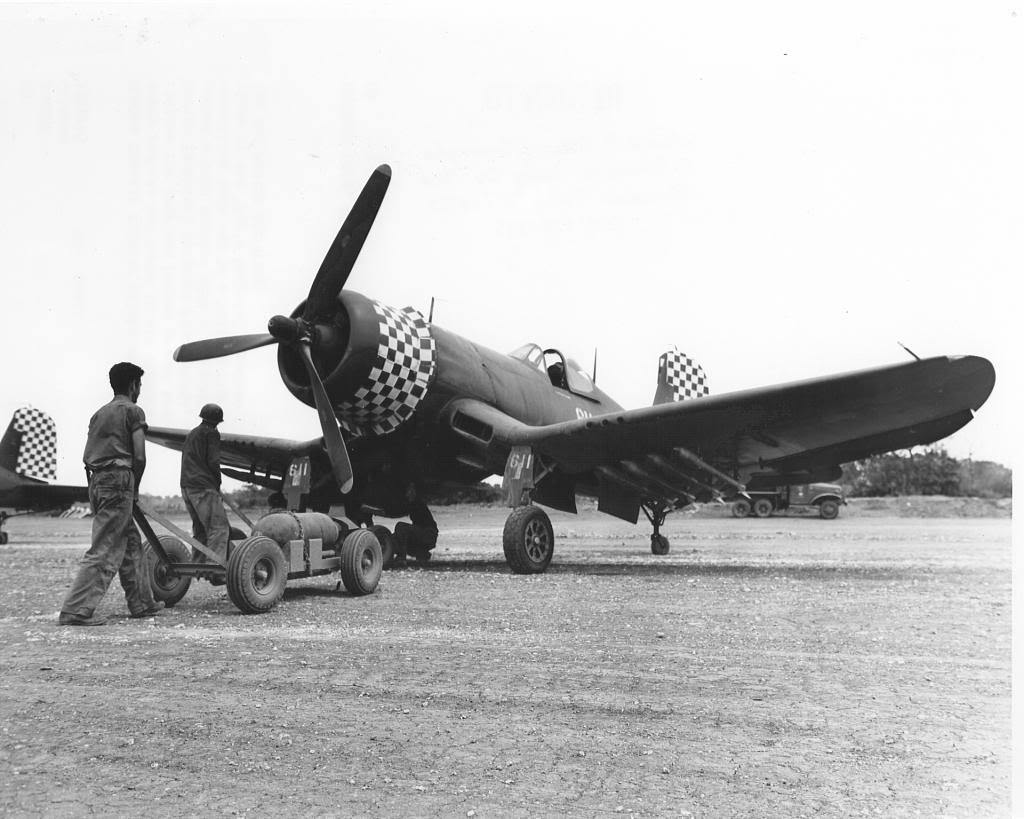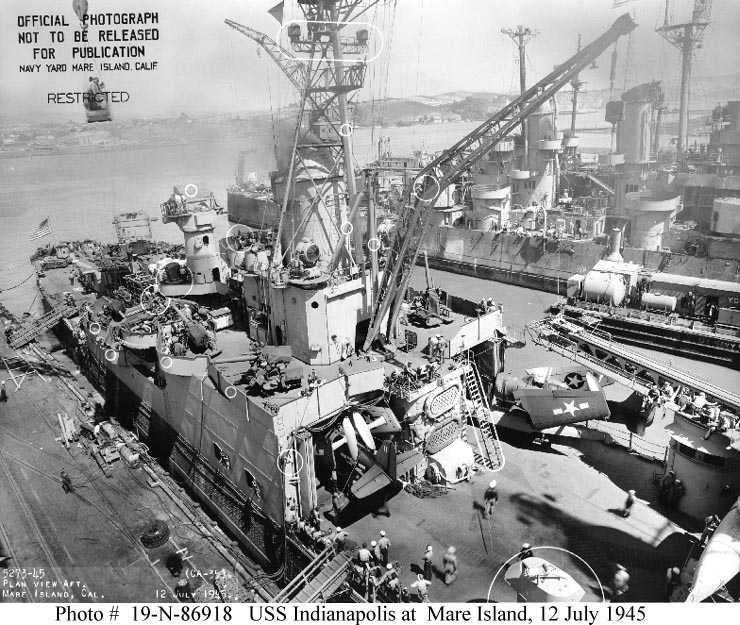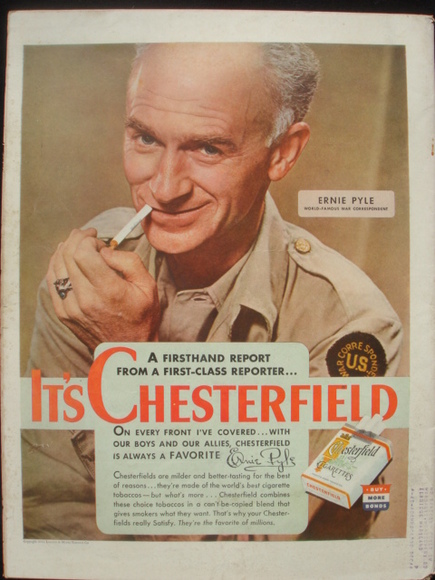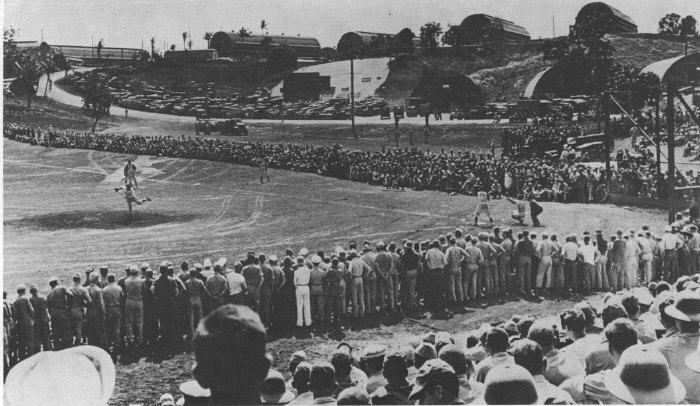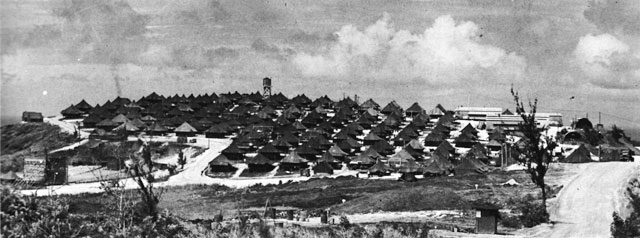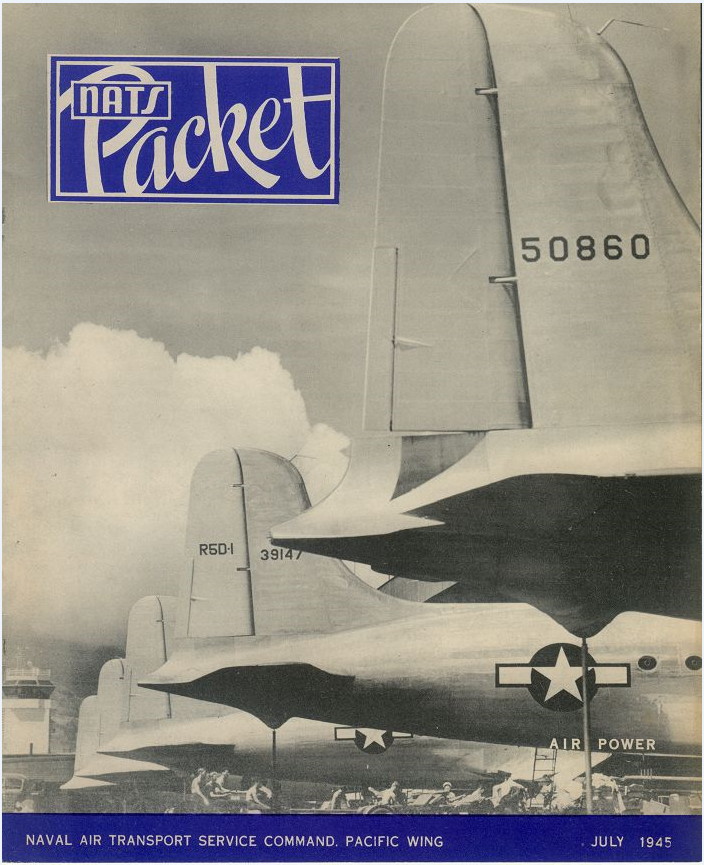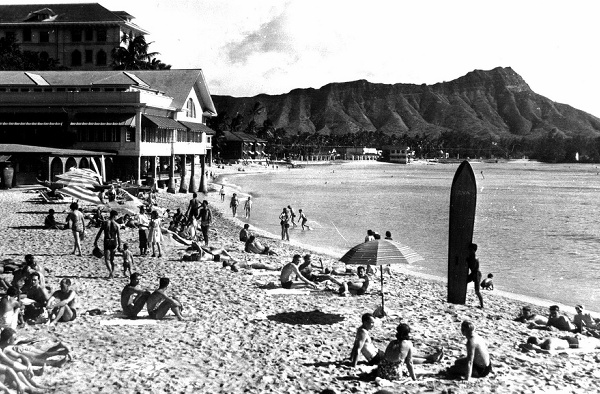[Tuttle hopped aboard a cargo-hauling “Victory” ship for the last leg of his trip to Okinawa.]
I called the Red Oak Victory a Liberty ship, but she is actually a newer “Victory” ship, technically of the Boulder class. The Victory ships carry a little bit more than the Liberty ships, and go a lot faster. They take more than a week off a trans-Pacific route, and then get back another week sooner ready to take another load.
Mariners will have noticed that I called this ship a “USS” and I am not mistaken in that. The Red Oak Victory is under U.S. Navy command and crewed entirely by officers and sailors. She is not a civilian Merchant Marine vessel. Her main job up to now has been hauling ammunition, and delivering it directly to other ships while the fleet was still at sea.
This ship is armed almost as well as the small destroyer I was on in Hawaii. Small and medium caliber guns ring the upper decks, making air attack dangerous (to the aircraft). The one big gun is on the back, all the better for making distance between us and a submarine running on the surface. These guns would be run by a Navy contingent on a Merchant Marine ship. Merchant Marine ships have seen plenty of action in this war, some scoring multiple aircraft kills in a single attack.
As I write this Okinawa is already in sight. A ship like this can get from the Marianas to the Ryukus in four days, even when running a zig-zig course to frustrate a submarine captain trying to time a torpedo into the same place as our ship. The run is not done in convoys; the whole shipping lane is patrolled from the air. Navy sea planes get regular catches of big tin fish with bombs and depth charges, but the situation makes the Atlantic veterans in this crew nervous. A line of well armed destroyers would certainly make a more reassuring security blanket.
We made this run without incident, and are ready to unload. But we’re on the familiar military schedule of ‘hurry up and wait.’ Okinawa still does not sprout enough piers and cranes for our ships to be unloaded fast enough. We will anchor in the far spread arms of what has been renamed Buckner Bay on the east side of the island, before getting directed to a pier, which could be at the nearby naval base or all the way around the island at Naha.
I am taking the opportunity to catch up on reading. The ship has a decent little library, and takes on new magazines and books when it can. Much of the recent news is from the big conference at Potsdam, Germany. President Truman should be just on his way back from that big to-do, where it is supposed that the whole post-war world was neatly drawn up.
Except of course that sketch depends on the Japanese playing their part according to the artists’ vision. Toward that end they issued an ultimatum to the Japs, that people are already referring to simply as the ‘Potsdam Declaration.’ It is not a long document. It spells out concisely that we intend to completely re-make Japan, not just defeat her, and that we have the means to do both. I read the whole text, and took particular note of the end.
“We call upon the government of Japan to proclaim now the unconditional surrender of all Japanese armed forces, and to provide proper and adequate assurances of their good faith in such action. The alternative is deliberate and thorough destruction.”
We are here to unload a full cargo of heavy bombs for the heavy bombers. I survey the vast mob of other ships anchored here waiting to unload assorted deadly cargoes, and I have no doubt about the thoroughness we intend to exhibit.
